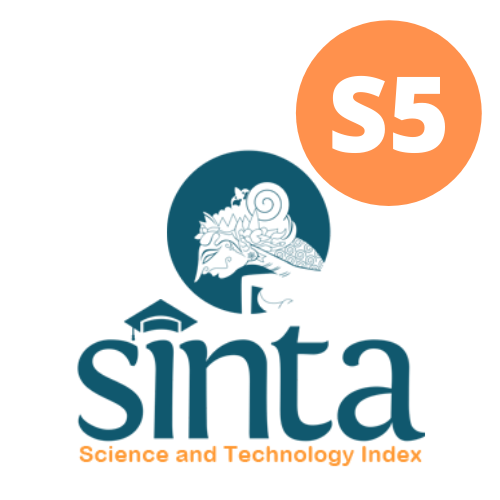THE ILLUSTRATION GROW OF CONTAMINANT FUNGI AT WHITE BREAD BASED ON TEMPERATURE AND HUMIDITY
DOI:
https://doi.org/10.47522/jmk.v1iIAHSC.115Keywords:
Bread, Not Steamed, Refrigerator Temperature, Room Temperature, SteamedAbstract
Introduction: Food is a basic need for every living creature. Bread is one of the processed foods that is consumed by many people as a staple food substitute for rice. The shelf life of white bread is usually not more than a week or even just three days. The appearance of bread that is not suitable for consumption is indicated by the appearance of discoloration on the bread due to being overgrown with fungus. The fungus that grows on white bread can produce mycotoxins during the storage process. Food poisoning can cause symptoms such as nausea, vomiting, and diarrhea.
Method: The purpose of this study was to determine the average percentage of white bread covered with contaminant fungi based on temperature and humidity. The method used is descriptive.
Results: The results showed that white bread overgrown with contaminant fungi by steaming and not steaming which was placed at room temperature grew faster than white bread placed at refrigerator temperature. At room temperature (27°C - 30°C), contaminant fungi began to grow on the seventh day on white bread 1 and on the fourth day on white bread 2 with the steamed treatment, while for the non-steamed treatment the contaminant fungi began to grow on the fifth day. At refrigerator temperature (13°C - 16°C), white bread with steamed and unsteamed treatment was not covered with contaminant fungi.
Conclusion: The conclusion of this study is that white bread overgrown with contaminant fungi at room temperature with steam treatment was 3.33% on the fourth to fifth day, and 66.6% on the seventh day. Bread covered with contaminant fungi at room temperature with treatment not steamed as much as 3.33% on the fifth to the seventh day. Researchers hope that future researchers can conduct this research by adding a microscopic examination method.
References
Arena, M. P., et al. 2019. Exploration Of The Microbial Biodiversity Associated With North Apulian Sourdoughs And The Effect Of The Increasing Number Of Inoculated Lactic Acid Bacteria Strains On The Biocontrol Against Fungal Spoilage. Fermentation. 5(97) : 1-21.
Arini, L. D. D. 2017. Faktor-Faktor Penyebab dan Karakteristik Makanan Kadaluarsa yang Berdampak Buruk pada Kesehatan Masyarakat. JITIPARI (Jurnal Ilmiah Teknologi Dan Industri Pangan UNISRI). 2(1) : 15–24.
Asril, M., et al. 2019. Isolasi Cendawan yang Berperan dalam Proses Pembuatan Pliek U (Makanan Fermentasi Khas Aceh). Majalah Ilmiah Biologi Biosfera: A Scientific Journal. 36(1) : 26–34.
BPOM. 2017. Laporan Akhir Tahun BPOM. Jakarta.
Broto, W. 2018. Status Cemaran Dan Upaya Pengendalian Aflatoksin Pada Komoditas Serealia Dan Aneka Kacang. Jurnal Litbang Pertanian. 37 (2) : 81–90.
Dharmaputra, O. S., et al. 2013. Kualitas Fisik, Populasi Aspergillus flavus, dan Kandungan Aflatoksin B1 pada Biji Kacang Tanah Mentah. Jurnal Fitopatologi Indonesia. 9 (4) : 99–106.
Hasanah, U. 2017. Mengenal Aspergillosis, Infeksi Jamur Genus Aspergillus. Jurnal Keluarga Sehat Sejahtera. 15(2) : 76–86.
Hidayat, N., Wignyanto, Sumarsih, S., & Putri, A. I. 2016. Mikologi Industri. UB Press, Malang.
Indraswati, D. 2016. Kontaminasi Makanan.Forum Ilmiah Kesehatan, Sukorejo.
Indrawati, I., & Fakhrudin, S. D. 2016. Isolasi dan Identifikasi Jamur pada Air Sumur Dan Air Sungai Di Pemukiman Warga. Biodjati. 1(1) : 27–38.
Kementerian Kesehatan Republik Indonesia. 2018. Lebih dari 200 Penyakit dapat Menular melalui Makanan, Keamanan Pangan Harus Diperhatikan. https://www.kemkes.go.id/article/view/18092700003/lebih-dari-200-penyakit-dapat-menular-melalui-makanan-keamanan-pangan-harus-diperhatikan.html. (Accessed: 2 Juli 2021).
Khasanah, H. N., et al. 2013. Studi Tentang Pengaruh Lama Penyimpanan Terhadap Keanekaragaman Kapang Kontaminan Pada Tepung Terigu. Seminar NasioNal X Pendidikan Biologu FKIP UNS. 1–5
Lestari, A. D., et al. 2019. Identifikasi Jamur Pada Roti Yang Dijual Di Kota Langsa Berdasarkan Lama Penyimpanan. Journal Jeumpa. 6(2) : 245-256.
Mizana, K. D., et al. 2016. Identifikasi Pertumbuhan Jamur Aspergillus Sp pada Roti Tawar yang Dijual di Kota Padang Berdasarkan Suhu dan Lama Penyimpanan. Jurnal Kesehatan Andalas. 5(2) : 355–360
Natawijaya, D., et al. 2015. Uji Kecepatan Pertumbuhan Jamur Rhizopus Stolonifer dan Aspergilus Niger yang Diinokulasikan pada Beberapa Jenis Buah Lokal. Siliwangi. 1(1) : 32–40.
Petruzzello, M. 2013. Rhizopus Fungus genus. https://www.britannica.com/science/Rhizopus (Accessed: 16 Desember 2020).
Purwantisari, S. & Hastuti, R. B. 2009. Isolasi dan Identifikasi Jamur Indigenous rhizosfer Tanaman Kentang dari Lahan Pertanian Kentang Organik di Desa Pakis, Magelang. Bioma: Berkala Ilmiah Biologi. 11(2) : 45–53.
Pusuma, D. A.,et al. 2018. Karakteristik Roti Tawar Kaya Serat Yang Disubstitusi Menggunakan Tepung Ampas Kelapa Jurnal Agroteknologi. 12(01) : 29-42.
Rahayu, W. P., & Nurwitri, C. C. 2012. Mikrobiologi Pangan. IPB Press, Bogor.
Ratnawati, et al. 2016. Identifikasi dan Penentuan Jenis Cendawan Yang Menginfeksi Kulit Pasien Balita di Rumah Sakit Umum Pusat Haji Adam Malik Medan. Jurnal Biologi, Lingkungan, Industri, Kesehatan. 2(2) : 90–99.
Ravimannan, N., et al. 2016. Study On Fungi Associated With Spoilage Of Bread. International Journal of Advanced Research in Biological Sciences. 3(4) : 165–167.
Riyanto, A. 2019. Aplikasi Metodologi Penelitian Kesehatan. Mulia Medika, Yogyakarta.
Roosheroe, I., et al. 2014. Mikologi Dasar dan Terapan. Yayasan Pustaka Obor Indonesia, Jakarta.
Sitanggang, A. B. 2017. Faktor Kerusakan Produk Bakeri dan Pengendaliannya. Foodreview Indonesia. 12(2) : 40–44.
Smith, A., & Hursepuny, A. 2015. Isolasi dan Identifikasi Jenis Jamur Pada Ubi Kayu (Manihot esculenta crants.) Dalam Proses Pembuatan Ubi Kayu Hitam Secara Tradisional Oleh Masyarakat Banda. BIOPENDIX: Jurnal Biologi, Pendidikan Dan Terapan. 1(2) : 161–165.
Sulastina, N. A. 2020. Analisis Jamur Kontaminan Pada Roti Tawar Yang Dijual Di Pasar Tradisional. Jurnal Aisyiyah Medika. 5(1) : 122–130.
Unachukwu, M. N., & Nwakanma, C. 2015. The Fungi Associated With The Spoilage Of Bread In Enugu State. International Journal of Current Microbiology and Applied Sciences. 4(1) : 989–995.
Unit, M. P. T. 2003. Mucor, a Most Destructive Mold. https://www.moldunit.com/mucor-mold.html (Accessed : 20 Desember 2020).
Vagelas, I., et al. 2011. Bread Contamination With Fungus. Carpathian Journal of Food Science and Technology. 3(2) : 1–6.
World Health Organization. 2019. 23 million people falling ill from unsafe food each year in Europe is just the tip of the iceberg. https://www.who.int/news/item/05-06-2019-23-million-people-falling-ill-from-unsafe-food-each-year-in-europe-is-just-the-tip-of-the-iceberg. (Accessed: 2 Juli 2021).
Downloads
Published
How to Cite
Issue
Section
License
Copyright (c) 2021 Jurnal Mitra Kesehatan

This work is licensed under a Creative Commons Attribution-NonCommercial-ShareAlike 4.0 International License.
Jurnal Mitra Kesehatan memberikan akses terbuka terhadap siapapun agar informasi pada artikel ini dapat bermanfaat bagi orang banyak. Jurnal dapat diakses tanpa dipungut biaya, sesuai dengan lisensi creative commons yang digunakan.










